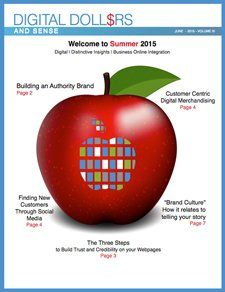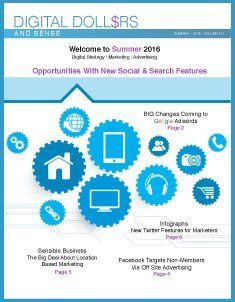Strategy
Strategy
Share
Tweet
Share
Mail
Strategy
Share
Tweet
Share
Mail
Digital strategy is explained as a plan of action on what to do online. We are the creators and trademark holders of the industry proven digitalroadmap® strategy framework - a plan and process on how your online initiatives will create value and revenue for your business. Get a digitalroadmap® and pave your way!
Digital strategy is explained as a plan of action on what to do online. We are the creators and trademark holders of the industry proven
digitalroadmap® strategy framework - a plan and process on how your online initiatives will create value and revenue for your business. Get a digitalroadmap® and pave your way!
Strategy Services
- Are proven and trademarked and include assessment, measurement, ROI
- Are flexible for big picture or a single planning activity - asset, resource and budget allocation
- Provide a factual audit for your existing online programs, and their performance
- Give clear and actionable direction
- Are always driven by your business goals and plans
- Provide you with deep digital, business and strategy knowledge
Strategy Services
- Are proven and trademarked and include assessment, measurement, ROI
- Are flexible for big picture or a single planning activity - asset, resource and budget allocation
- Provide a factual audit for your existing online programs, and their performance
- Give clear and actionable direction
- Are always driven by your business goals and plans
- Provide you with deep digital, business and strategy knowledge
Strategy Services
- Are proven and trademarked and include assessment, measurement, ROI
- Are flexible for big picture or a single planning activity - asset, resource and budget allocation
- Provide a factual audit for your existing online programs, and their performance
- Give clear and actionable direction
- Are always driven by your business goals and plans
- Provide you with deep digital, business and strategy knowledge
Thanks for Visiting.
Receive a FREE copy
of our Successful
Digital Marketing
Models Whitepaper!
Thanks for Visiting.
Receive a FREE copy of our Successful Digital Marketing Models Whitepaper!
Thanks for Visiting.
Receive a FREE copy of our Successful
Digital Marketing Models Whitepaper!
Planning Your Route to Digital Success - digitalroadmaps®
About digtialroadmaps®
From a strategic perspective, digitalroadmaps® ask you to define your goals, review your options, document a direction and articulate your success measurements. From an implementation and operations or tactical perspective, digitalroadmaps® allow you to plan marketing, advertising, content, product, service and communications activities; ensure the product and services you implement become part of your new day-to-day activities; and review performance against your original goals.
Success and Engagement
Internet and social media success doesn’t happen accidentally – it happens through good planning and hard work. That includes articulating your goals, developing and implementing a plan, monitoring your activities, and making adjustments as needed.  Online success is also defined in terms of your intent, and means different things based on your business. For many businesses, this means profits and returns on digital dollar investments from Internet and social media activities. For brand marketers, governments and not-for-profit organizations, this could mean growth in both audience and their engagement. For individuals, it could mean designing and creating your own Website page, analyzing and creating a great linking strategy, ensuring your business is advertised correctly in directories, or setting up and executing your own paid search advertising campaign. Regardless of what success means to you, the common elements in reaching it must include both planning and follow-through.
Internet and social media success doesn’t happen accidentally – it happens through good planning and hard work. That includes articulating your goals, developing and implementing a plan, monitoring your activities, and making adjustments as needed.  Online success is also defined in terms of your intent, and means different things based on your business. For many businesses, this means profits and returns on digital dollar investments from Internet and social media activities. For brand marketers, governments and not-for-profit organizations, this could mean growth in both audience and their engagement. For individuals, it could mean designing and creating your own Website page, analyzing and creating a great linking strategy, ensuring your business is advertised correctly in directories, or setting up and executing your own paid search advertising campaign. Regardless of what success means to you, the common elements in reaching it must include both planning and follow-through.
The Five-Step digitalroadmap® Strategy Process
A digitalroadmap® Strategy Process can be used to plan and document your Internet and social media strategies. It’s important to keep in mind that:
- This process is flexible, functional and customizable to the needs of any organization. For example, one can place more emphasis on the Current Situation section and Collaborative Review sections within the process, as opposed to completing in-depth analysis of all possible technology/social options for your company.
- The Roadmap process can be adjusted to meet the demands of your organizational size and culture. If you prefer to create this plan on the back of a napkin while eating chicken wings at your favourite restaurant, then that’s okay. The important part is that you’ve discussed strategy and ensured you are spending your digital dollars wisely, based on your current situation, while you plan to improve.
In order to create a strategy using the digitalroadmap® Strategy Process, you should have the following:
- An articulated vision, business plan or list of business goals you wish to accomplish. Deployment of Internet and social programs is an enabler for organizational activities, not a business driver; so, without business goals and objectives, a Roadmap has nothing to enable.
- The ability and culture to factually audit your existing Internet and social programs and their performance where necessary. You may find yourself asking questions like, “Is what we are doing now working?” or “How are we measuring it?”
- In general terms, a practical and clear idea of the human and budget re- sources available to allocate to any plans made, so the planning process can make realistic recommendations.
- Not absolutely necessary, but highly recommended, is access to a trusted, knowledgeable, neutral source of information to help answer any questions that may arise around the Internet and social media products and services you are considering.
The steps to follow using the digitalroadmap® Strategy Process include:
- Step 1 – Framing the Objectives and Deliverables In this step, define the specific goals, deliverables, project sponsors and team members for your activity. This can be done in a one-page document often re- ferred to as a “project scope”.
- Step 2 – Assessing Your Current Environment Current situation analysis and summary – In this step, note and assess cur- rent Internet and social media configurations and how these are performing in relation to your goals, costs, and time taken to maintain them. It’s often helpful to use analytics tools to understand how your organization is found online and who your customers are, as well as their current comments about your products and services. When assessing your current environment, it is important to understand how much social or community equity you have. Who are your advocates? Who is in your immediate community? Who comprises your indirect community? What is their opinion on your brand, products and services? How do they react to items you request from them? Who are the influencers? Who are the followers? Can you use crowd sourcing techniques to assist with your resource and marketing activities? Understanding your social and community equity will help build a support base for the products and services you implement.
- Step 3 – Option Mapping Regardless of your budget, start simple. Today, a first step strategy for the majority of organizations includes: being an active part of one social media channel, either as an organization or as individuals representing your organization, ensuring that your organization is listed in the appropriate directories and can be found through search, and ensure you publish a web page that describes your organization and how to contact you. From this point there are lots of options to choose from, all of them deter- mined by your business goals and ability to deliver meaningful content to your audience. Explore the services best suited to your organization and its goals. Consider whether the service will be practical to implement based on your bud-get and available resources. Create a budget sheet that outlines your forecasted one-time costs to launch each service and the costs (resource, content creation, fees) to maintain each one. During option mapping, consider whether there will be conflict and confu- sion within your organization as a result of the products and services you plan to implement. It is important to have the full support of all parties working with you will greatly enhance your chance of success.
- Step 4 – Collaborative Review Now that you have developed the basic outline of a strategy, review this strat- egy within your organization, with all your stakeholders, and, if possible, with a neutral trusted advisor. Include discussions on how services from strategy decisions will be deployed and operated. These discussions form the basis of recom- mendations and uncover any items not yet fully explored.
- Step 5 – Recommendations and Communications The final stage in setting your strategy is documenting the information you have collected and ensuring that all parties who will help you implement and maintain it agree with the “move forward” position you have established. The following information should be documented, at minimum: 1) A one-page Roadmap 2) A budget with estimated one-time and ongoing costs. 3) A list of assumptions about your strategy plan.
Planning Your Route to Digital Success - digitalroadmaps®
About digtialroadmaps® From a strategic perspective, digitalroadmaps® ask you to define your goals, review your options, document a direction and articulate your success measurements. From an implementation and operations or tactical perspective, digitalroadmaps® allow you to plan marketing, advertising, content, product, service and communications activities; ensure the product and services you implement become part of your new day-to-day activities; and review performance against your original goals.
Success and Engagement
Internet and social media success doesn’t happen accidentally – it happens through good planning and hard work.
That includes articulating your goals, developing and implementing a plan, monitoring your activities, and making adjustments as needed.
Online success is also defined in terms of your intent,and means different things based on your business. For many businesses, this means profits and returns on digital dollar investments from Internet and social media activities. For brand marketers, governments and not-for-profit organizations, this could mean growth in both audience and their engagement. For individuals, it could mean designing and creating your own Website page, analyzing and creating a great linking strategy, ensuring your business is advertised correctly in directories, or setting up and executing your own paid search advertising campaign. Regardless of what success means to you, the common elements in reaching it must include both planning and follow-through.
The Five-Step digitalroadmap® Strategy Process
A digitalroadmap® Strategy Process can be used to plan and document your Internet and social media strategies. It’s important to keep in mind that:
- This process is flexible, functional and customizable to the needs of any organization. For example, one can place more emphasis on the Current Situation section and Collaborative Review sections within the process, as opposed to completing in-depth analysis of all possible technology/social options for your company.
- The Roadmap process can be adjusted to meet the demands of your organizational size and culture. If you prefer to create this plan on the back of a napkin while eating chicken wings at your favourite restaurant, then that’s okay. The important part is that you’ve discussed strategy and ensured you are spending your digital dollars wisely, based on your current situation, while you plan to improve.
In order to create a strategy using the digitalroadmap® Strategy Process, you should have the following:
- An articulated vision, business plan or list of business goals you wish to accomplish. Deployment of Internet and social programs is an enabler for organizational activities, not a business driver; so, without business goals and objectives, a Roadmap has nothing to enable.
- The ability and culture to factually audit your existing Internet and social programs and their performance where necessary. You may find yourself asking questions like, “Is what we are doing now working?” or “How are we measuring it?”
- In general terms, a practical and clear idea of the human and budget re- sources available to allocate to any plans made, so the planning process can make realistic recommendations.
- Not absolutely necessary, but highly recommended, is access to a trusted, knowledgeable, neutral source of information to help answer any questions that may arise around the Internet and social media products and services you are considering.
The steps to follow using the digitalroadmap® Strategy Process include:
- Step 1 – Framing the Objectives and Deliverables In this step, define the specific goals, deliverables, project sponsors and team members for your activity. This can be done in a one-page document often re- ferred to as a “project scope”.
- Step 2 – Assessing Your Current Environment Current situation analysis and summary – In this step, note and assess cur- rent Internet and social media configurations and how these are performing in relation to your goals, costs, and time taken to maintain them. It’s often helpful to use analytics tools to understand how your organization is found online and who your customers are, as well as their current comments about your products and services. When assessing your current environment, it is important to understand how much social or community equity you have. Who are your advocates? Who is in your immediate community? Who comprises your indirect community? What is their opinion on your brand, products and services? How do they react to items you request from them? Who are the influencers? Who are the followers? Can you use crowd sourcing techniques to assist with your resource and marketing activities? Understanding your social and community equity will help build a support base for the products and services you implement.
- Step 3 – Option Mapping Regardless of your budget, start simple. Today, a first step strategy for the majority of organizations includes: being an active part of one social media channel, either as an organization or as individuals representing your organization, ensuring that your organization is listed in the appropriate directories and can be found through search, and ensure you publish a web page that describes your organization and how to contact you. From this point there are lots of options to choose from, all of them deter- mined by your business goals and ability to deliver meaningful content to your audience. Explore the services best suited to your organization and its goals. Consider whether the service will be practical to implement based on your bud-get and available resources. Create a budget sheet that outlines your forecasted one-time costs to launch each service and the costs (resource, content creation, fees) to maintain each one. During option mapping, consider whether there will be conflict and confu- sion within your organization as a result of the products and services you plan to implement. It is important to have the full support of all parties working with you will greatly enhance your chance of success.
- Step 4 – Collaborative Review Now that you have developed the basic outline of a strategy, review this strat- egy within your organization, with all your stakeholders, and, if possible, with a neutral trusted advisor. Include discussions on how services from strategy decisions will be deployed and operated. These discussions form the basis of recom- mendations and uncover any items not yet fully explored.
- Step 5 – Recommendations and Communications The final stage in setting your strategy is documenting the information you have collected and ensuring that all parties who will help you implement and maintain it agree with the “move forward” position you have established. The following information should be documented, at minimum: 1) A one-page digitalroadmap® 2) A budget with estimated one-time and ongoing costs. 3) A list of assumptions about your strategy plan.



















